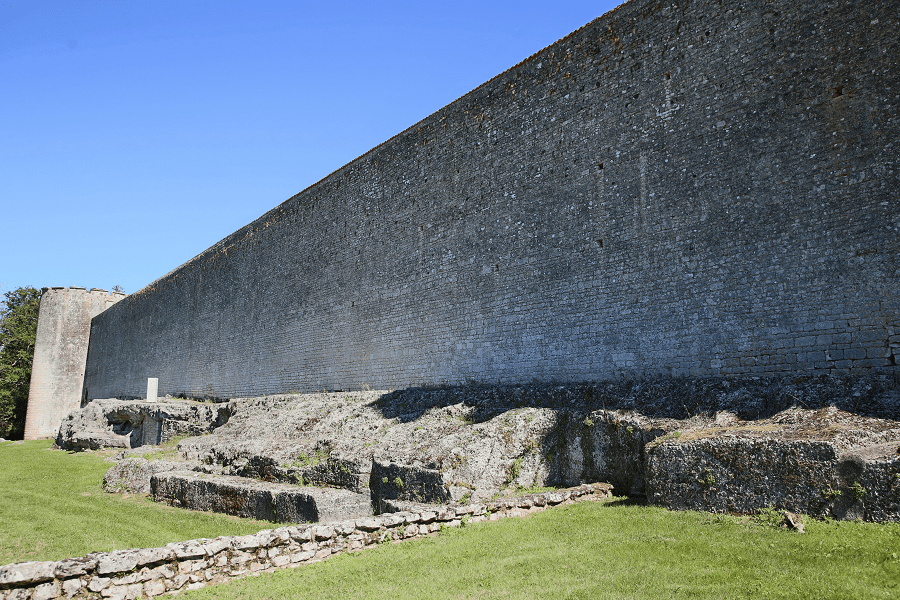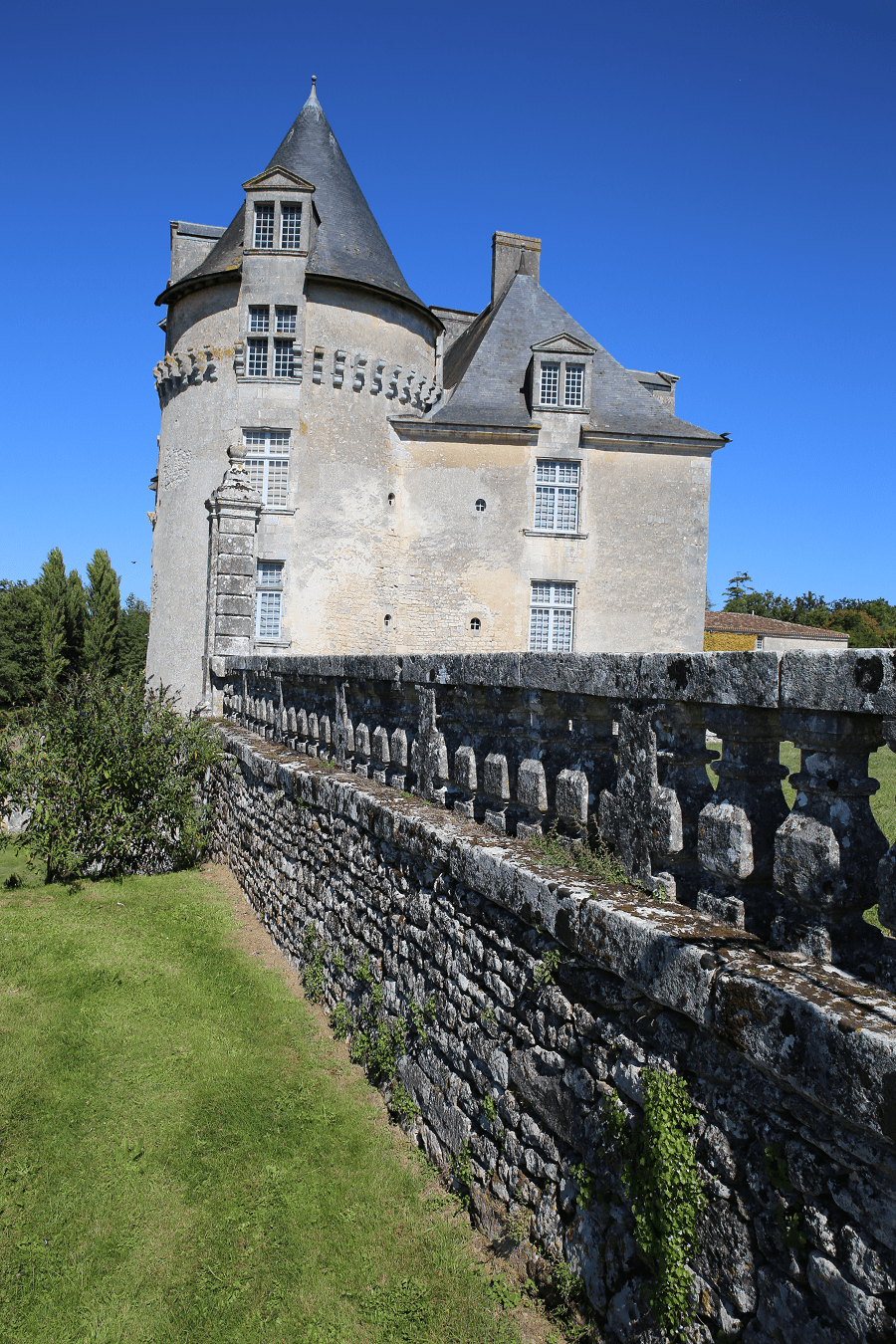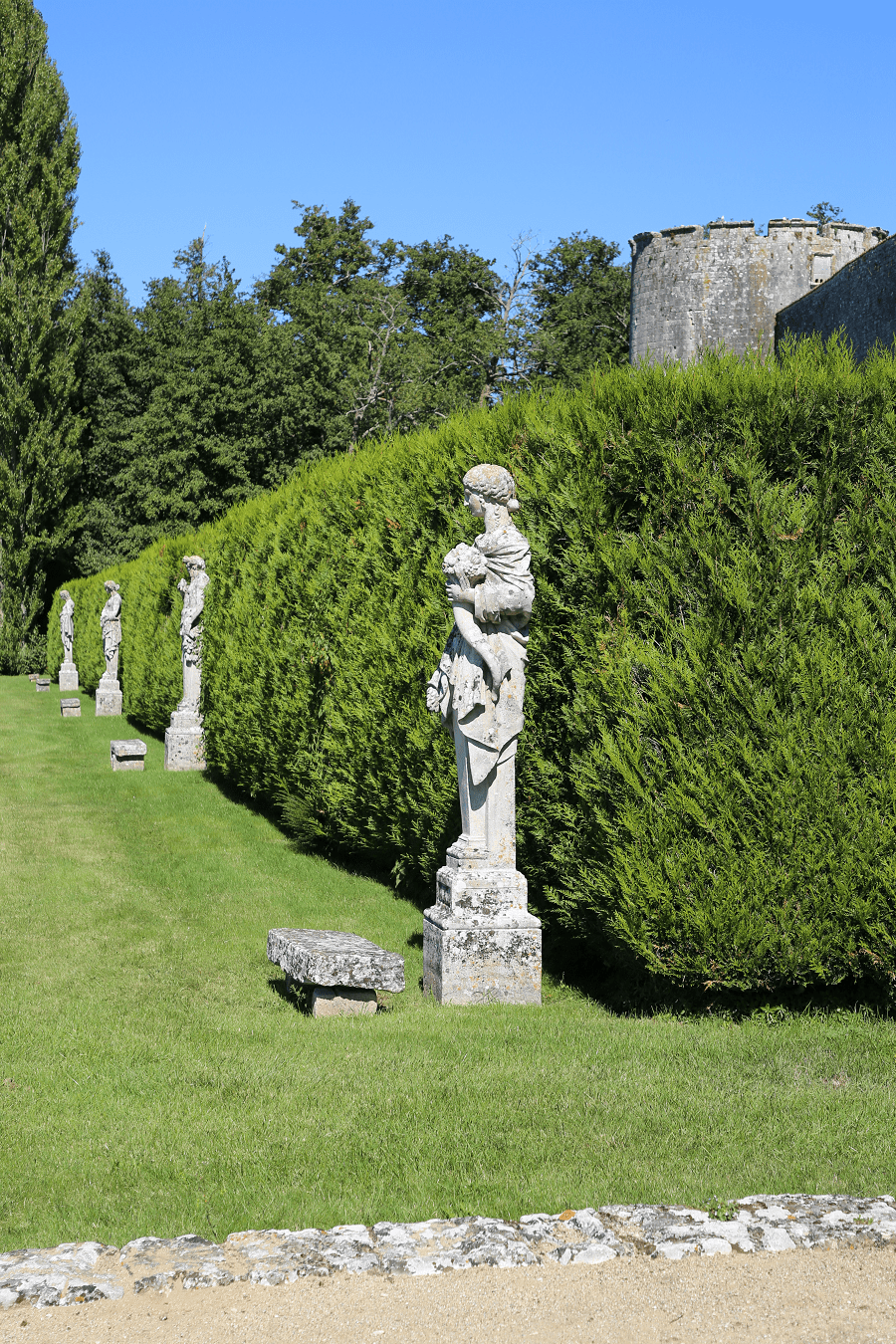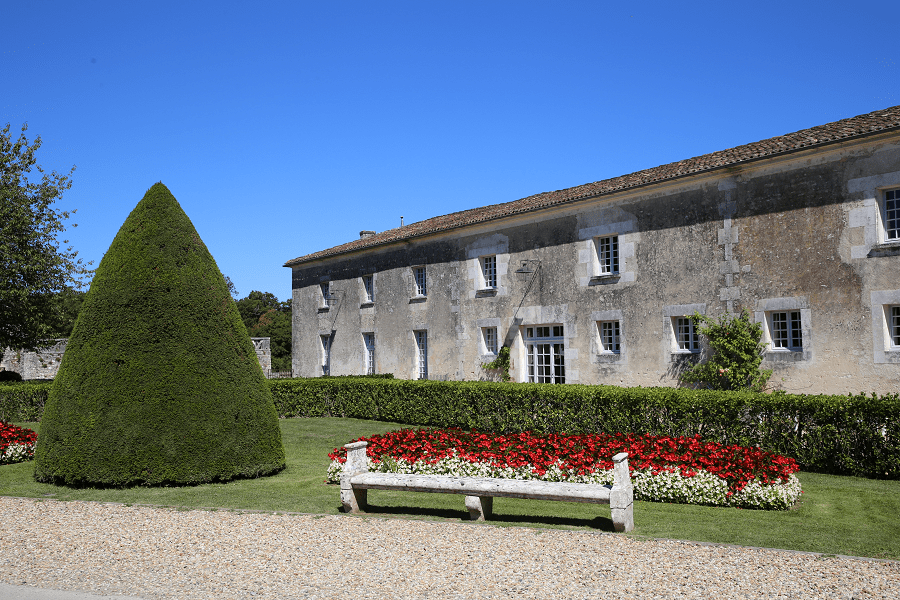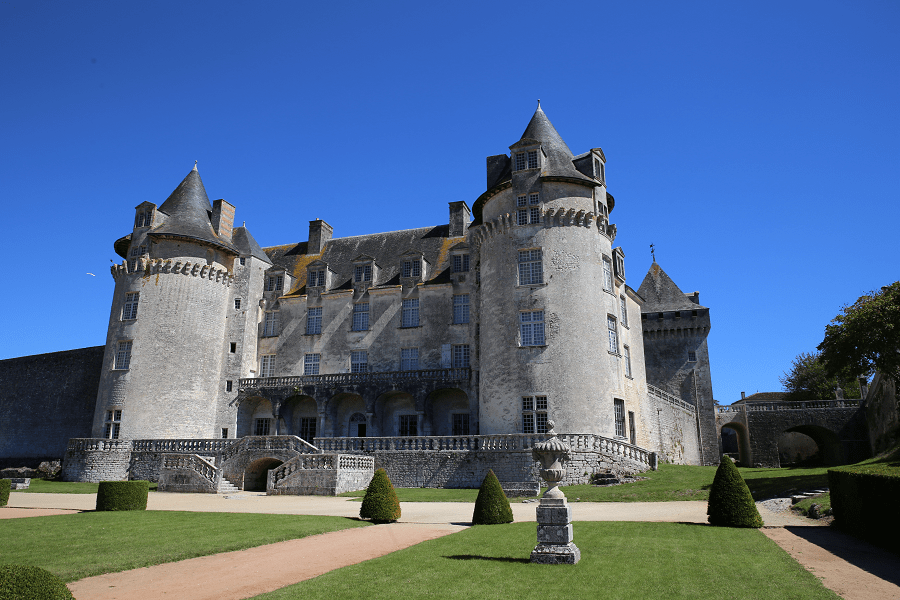Château de la Roche Courbon is a large château, developed from an earlier castle, in the Charente-Maritime département of France. Located about 20 minutes by car from Rochefort.
History
Under the current castle, there are caves whose prehistoric furnishings show that they were inhabited during the Mousterian and the Aurignacian. In other places of the forest which surrounds this residence, remain: Gallo-Roman village, Merovingian tombs and, well before the current residence, the remains of walls of the eleventh century.
Around 1475, Jehan II de Latour built a fortress made up of two main buildings, with four powerful towers and a massive keep. This fortified castle, built in the shape of a triangle on a rocky outcrop, is naturally defended by the marsh. To the north, in advance, the Tour de la Fuye stands guard.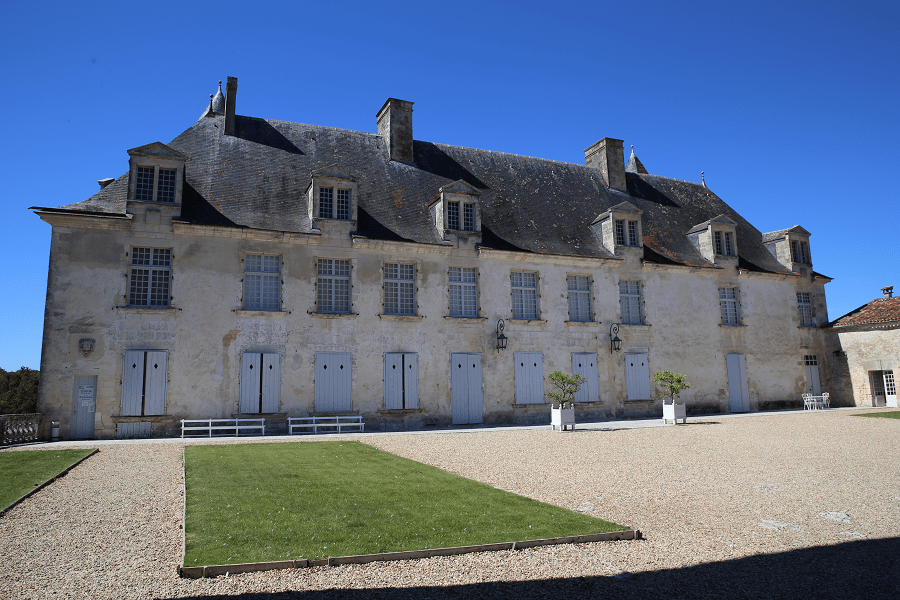
In the seventeenth century, Jean-Louis de Courbon transformed La Roche-Courbon as can be seen in the painting by the Dutch painter Jan Hackaert (1628-1685).
The castle is surrounded by sumptuous French-style gardens. The main building opens to the light. An elegant balcony is supported by five Tuscan columns. A double-level staircase leads down to the gardens.
Shrubs surround a large terrace, flanked by two Louis XIII style pavilions.
One of the former owners of the castle was Jean-Baptiste Mac Nemara, lieutenant of the Frigate and ensign of a marine company, who in 1713 married Julienne Stapleton, daughter of Jean Ier Stapleton, one of the first Irish of Nantes. He bought the castle much later, in 1756, a little before his death, for the sum of 130,000 pounds.
In 1785, the Marquis Sophie-Jacques de Courbon Blénac settled in the castle, undertook a series of embellishments: the monumental stone staircase and the wrought iron gates in the gardens.
The Revolution occurring and the marquis not having emigrated. In 1817, his daughter sold the estate at auction. Then begins the long sleep of La Roche Courbon, before its second rebirth in the twentieth century.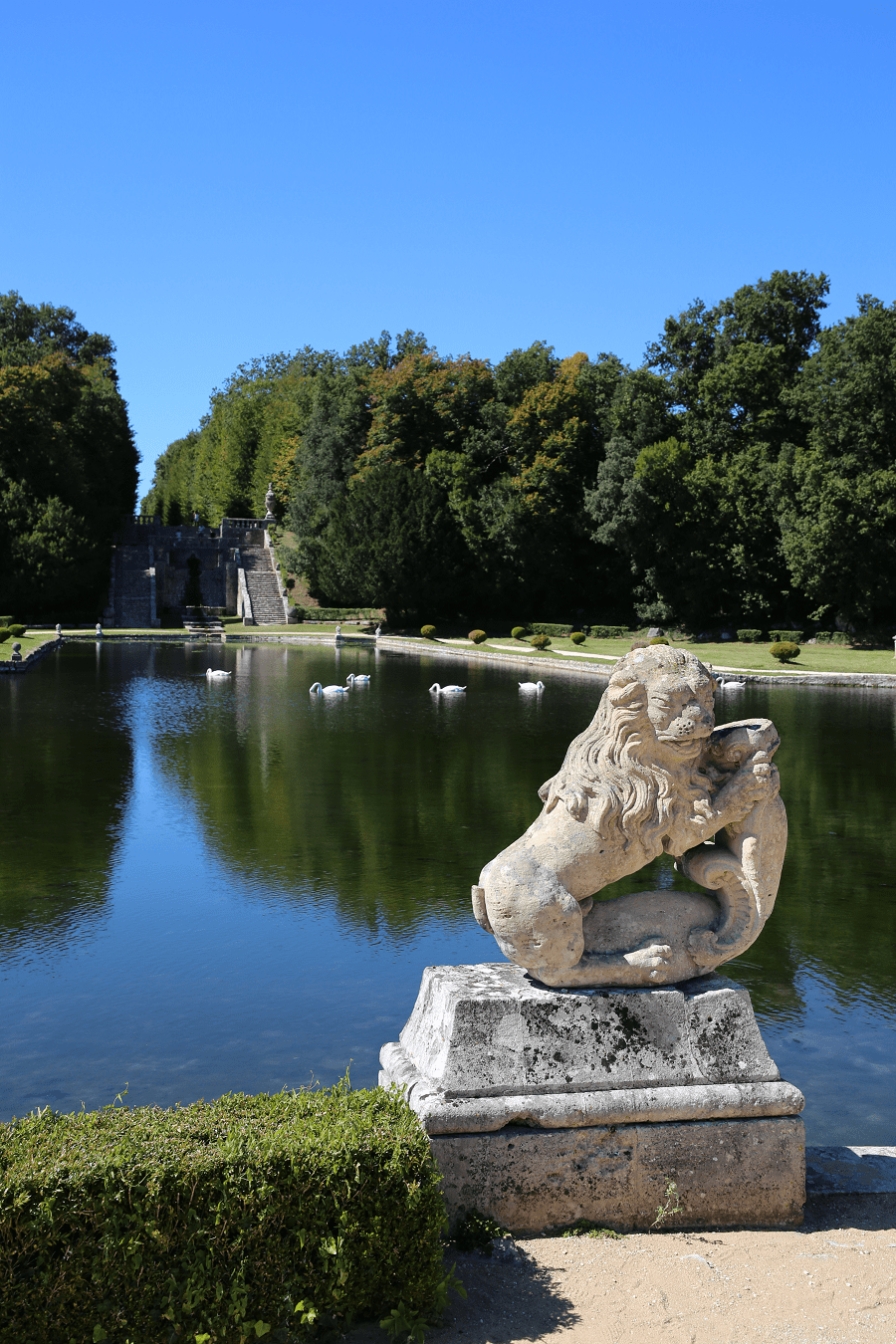
Pierre Loti (Pierre Loti was a French naval officer and novelist, known for his exotic novels and short stories) often went on vacation to his sister’s home in Saint-Porchaire. During his walks through the surrounding countryside, he fell under the spell of the castle of Roche Courbon, abandoned, in ruins, in the middle of the brushwood. The writer readily nicknamed it as the “castle of Sleeping Beauty”.
After the war of 1939-1945, the estate, classified as a Historic Monument partly in 1925 and in 1946 as a whole (castle, gardens and park), is open to visitors.
Architecture
The castle, restored in the 17th century, has a facade adorned with Renaissance arcades.
From the Renaissance terrace, a double-level staircase leads to the French-style gardens.
Today, the Château de la Roche Courbon is open to visitors all year round and also offers rental rooms for weddings and all kinds of professional or private events. Many activities are offered there (old games, medieval festival, escape game, Christmas market, etc.).
Address: Rue de la Belle au Bois Dormant, 17250 Saint-Porchaire, France
Hours:
Wednesday 10AM–7PM
Thursday 10AM–7PM
Friday 10AM–7PM
Saturday 10AM–5PM
Sunday 10AM–7PM
Monday 10AM–7PM
Tuesday 10AM–7PM
GPS coordinates: 45°50′10″N 0°46′53″W




